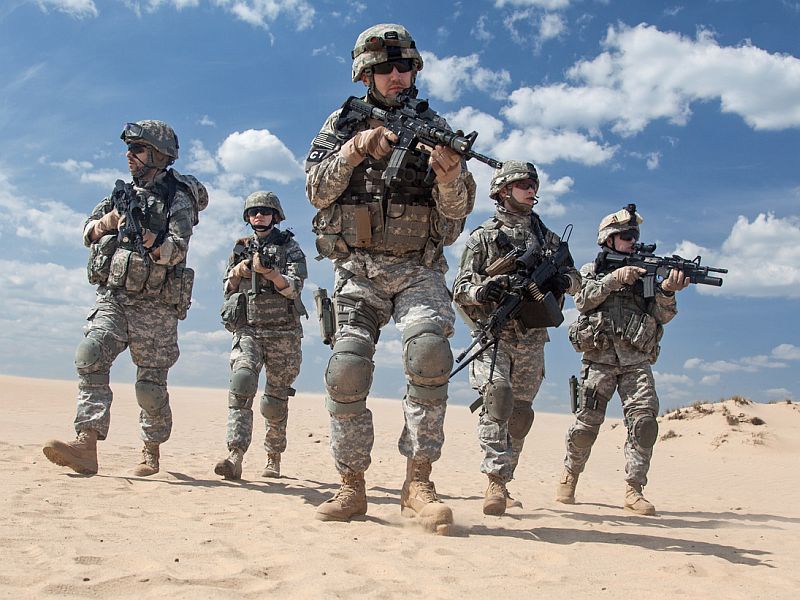THE VA's AID & ATTENDANCE
PENSION
The VA Aid and Attendance (A&A) Pension provides benefits for veterans and surviving spouses who require the regular attendance of another person to assist in eating, bathing, dressing and undressing or taking care of the needs of nature.
It also includes individuals who are blind or a patient in a nursing home because of mental or physical incapacity.
Assisted care in an assisting living facility also qualifies.
To qualify for A&A it needs to be established by your physician that you require daily assistance by others to dress, undress, bathing, cooking, eating, taking on or off of prosthetics, leave home etc.
You DO NOT have to require assistance with all of these.
There simply needs to be adequate medical evidence that you cannot function completely on your own.
The A&A Pension can provide: up to $1,758 per month to a veteran,
$1,130 per month to a surviving spouse, or $2,085 per month to a couple*.
A Veteran filing with a Sick Spouse is eligible for up to $1,380 per month.
Many families overlook the A&A Pension as it pertains to veterans who are still independent, but have an ill spouse. Keep in mind that in this situation, if the spouse's medical expense completely depletes their combined monthly income, the Veteran can file as a Veteran with a sick spouse.
Eligibility must be proven by filing the proper Veterans Application for Pension or Compensation:
Form 21-534EZ for surviving spouse (Instructions Included).
Form 21-527EZ Veteran (Instructions Included).
This application will require a copy of DD-214 (see below for more information) or separation papers, Medical Evaluation from a physician, current medical issues, net worth limitations, and net income, along with out-of-pocket Medical Expenses.
A DD-214 is issued to military members
upon separation from active service.
DD-214s were issued to separated service members beginning in the 1950.
The term "DD-214" is often used generically to mean "separation papers" or "discharge papers", no matter what form number was used to document active duty military service. If the VA has a copy of a DD-214, it is usually because the veteran attached a copy (or sometimes, the original) to his or her application for disability or education benefits. If you've lost your original DD-214 or a copy and you are receiving (or applied for in the past) disability or education benefits from the VA, they may have a copy (or the original, if you gave it to them) on file. At the very least, if you are currently receiving benefits (or did in the past), they should be able to provide a Statement of Service, which can be used instead of a "DD-214".
To request a copy of a DD-214 visit:
Contact your VA Service Officer to begin your application for this veterans benefit.
* * * * * * * * * * * * * * * * * * * * * * * * * * * *
Mesothelioma Prognosis Network
Mesothelioma is cancer caused by exposure to asbestos that most often forms in the lining of the lungs or abdomen. As it grows and spreads, different physical and mental effects are felt in the body. Understanding what to expect, as well as receiving the proper resources and information from qualified experts, is a step in the right direction to treating this rare cancer.
Mesothelioma is a rare, aggressive cancer with a generally unfavorable prognosis. Most patients have a life expectancy ranging from four to 18 months; however, there are many factors that influence your individual prognosis and there are ways for you to extend your life past your initial life expectancy.
Understanding your mesothelioma prognosis and how you can improve it can help you make decisions about treatment. It can also help you cope, move forward and increase your quality of life.
* * * * * * * * * * * * * * * * * * * * * * * * * * *
The Mesothelioma Center offers the most up-to-date information
on the dangers of asbestos exposure and mesothelioma cancer.
We have a Veterans Assistance program where our experienced Veteran Counselors work with veterans in applying for VA benefits related to asbestos related diseases.
The Mesothelioma Center at Asbestos.com
For the latest on Mesothelioma Awareness
* * * * * * * * * * * * * * * * * * * * * * * *
For info on Mesothelioma, visit:
* * * * * * * * * * * * * * * * * * * * * * * *
For info on Mesothelioma, visit:
* * * * * * * * * * * * * * * * * * * * * * * *
For information on dealing with funds for the cost of treatment, visit
* * * * * * * * * * * * * * * * * *
For information concerning Veterans & Mesothelioma, visit:
* * * * * * * * * * * * * * * * * *
* * * * * * * * * * * * * * * * * *
Camp Lejeune Water Contamination
U.S. Marine Corps Base Camp Lejeune, North Carolina was established in 1942.
In 1982, the Marine Corps discovered specific volatile organic compounds (VOCs) in the drinking water provided by two of the eight water treatment plants on base.
Water from the Tarawa Terrace water treatment plant was primarily contaminated by PCE (perchloroethylene or tetrachloroethylene).
The source of the contamination was the waste disposal practices at
ABC One-Hour Cleaners, an off-base dry cleaning firm.
The Agency for Toxic Substances and Disease Registry (ATSDR) used a data analysis and modeling approach to reconstruct historical contaminant concentrations. Using these approaches, ATSDR estimated that PCE concentrations exceeded the current EPA maximum contaminant level of 5 ppb in drinking water from the Tarawa Terrace water treatment plant for 346 months during November 1957-February 1987. The most contaminated wells were shut down in February 1985.
Water from the Hadnot Point water treatment plant was contaminated primarily by TCE (trichloroethylene). Other contaminants in the drinking water included PCE and benzene and TCE degradation products trans-1,2-DCE (t-1,2-dichloroethylene) and vinyl chloride. Supply wells were contaminated by multiple sources: leaking underground storage tanks, industrial area spills, and waste disposal sites. ATSDR modeled the contamination and estimated that at least one VOC exceeded its current EPA maximum contaminant level in drinking water during August 1953 and January 1985.
Additional details on the water contamination situation at Camp Lejeune are available.
Information on the health effects of these drinking water contaminants is located here.
Most available information comes from animal studies or studies of workers
who use these chemicals in their workplace.
Very few studies have been conducted of people exposed to these chemicals in their drinking water.
ATSDR has been assessing the effects of exposure to drinking water containing VOCs since 1993.
More information about ATSDR's health studies can be found here.
The Agency for Toxic Substances and Disease Registry (ATSDR), based in Atlanta, Georgia, is a federal public health agency of the U.S. Department of Health and Human Services.
ATSDR serves the public by using the best science, taking responsive public health actions, and providing trusted health information to prevent harmful exposures and diseases related to toxic substances.
___________________________________________________________
Study: Causes of Gulf War Illness Pinpointed
In most cases, it was exposure to toxins employed by U.S. military, researcher saysMonday, February 1, 2016
MONDAY, Feb. 1, 2016 (HealthDay News)
Exposure to pesticides and other toxins appears to be the cause of Gulf War illness in U.S. veterans, a new analysis states.
The Boston University researchers reviewed studies on Gulf War illness, and said their findings "clearly and consistently" show a link between the disorder and exposure to pesticides and taking pyridostigmine bromide (PB) pills, which were meant to protect troops against the effects of nerve gas.
There's also evidence of a connection between Gulf War illness and exposure to the nerve gas agents sarin and cyclosarin, and to oil well fire emissions, according to the findings published in the January issue of the journal Cortex.
These toxins damaged troops' nervous and immune systems, and reduced the amount of white and gray matter in veterans' brains, said study leader Roberta White in a news release from the university. White is a professor of environmental health at Boston University's School of Public Health.
The main causes of Gulf War illness are like so-called "friendly fire," said study co-author James Binns. "We did it to ourselves," he said in the news release.
"Pesticides, PB, nerve gas released by destroying Iraqi facilities -- all are cases of friendly fire. That may explain why government and military leaders have been so reluctant to acknowledge what happened," Binns said.
About 700,000 U.S. troops fought in the first Gulf War 25 years ago, and as many as 250,000 veterans of that conflict have Gulf War illness, the researchers said. It is a debilitating disorder that features symptoms such as fatigue, joint and muscle pain, headaches, concentration and memory difficulties, gastrointestinal problems and skin rashes.
For years, Gulf War veterans have claimed that the U.S. Department of Veterans Affairs did not take Gulf War illness seriously. In 2008, a committee created by Congress and directed by the White House released a report that said Gulf War illness is a real disorder that's distinct from stress-related syndromes.
The report from the Research Advisory Committee on Gulf War Veterans' Illnesses called for research into the causes and treatments of the illness. Binns was chairman of that committee.
Efforts to find effective treatments for Gulf War illness have been unsuccessful, but recent research has started to offer promising leads, the researchers added.
SOURCE: Boston University Medical Center, news release, Jan. 26, 2016
* * * * * * * * * * * * * * * * * * * * * * * * * * * * * * * * * * *
Like us (Post 217) on Facebook

